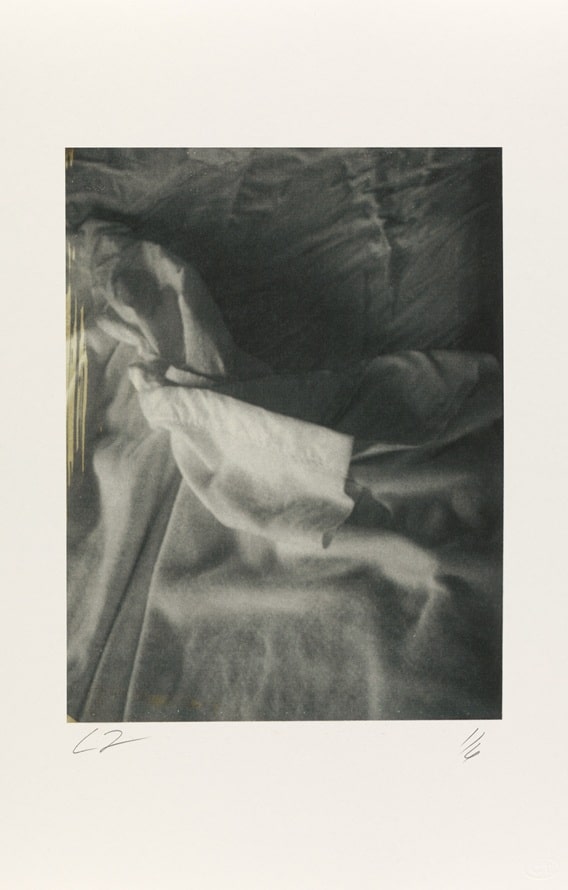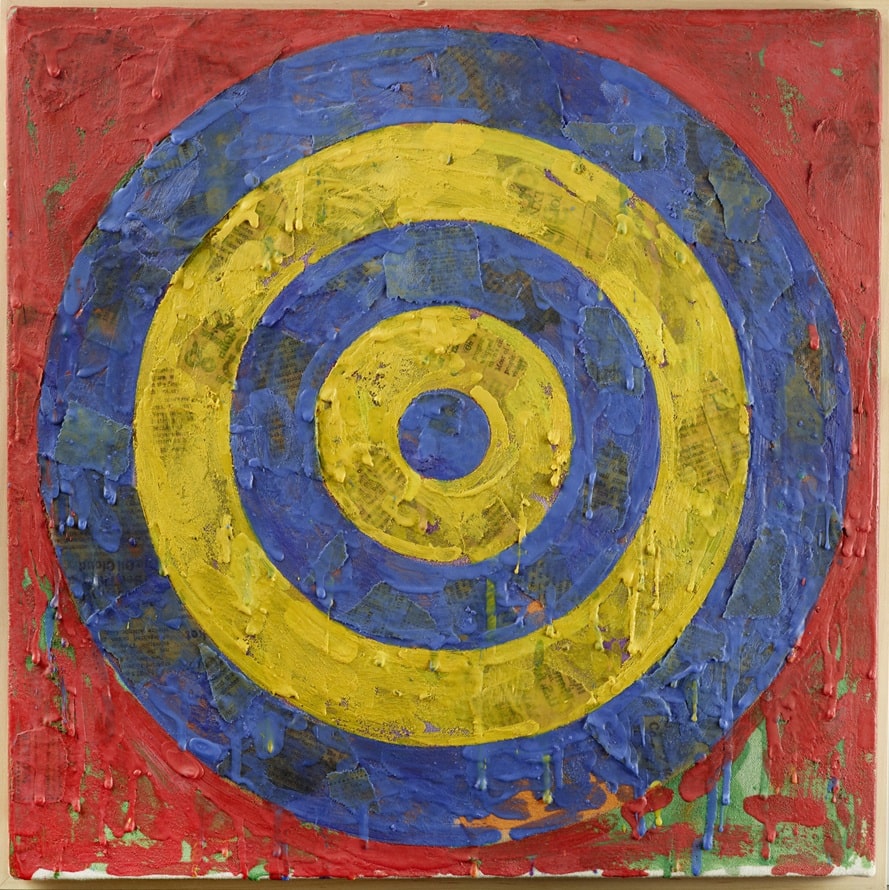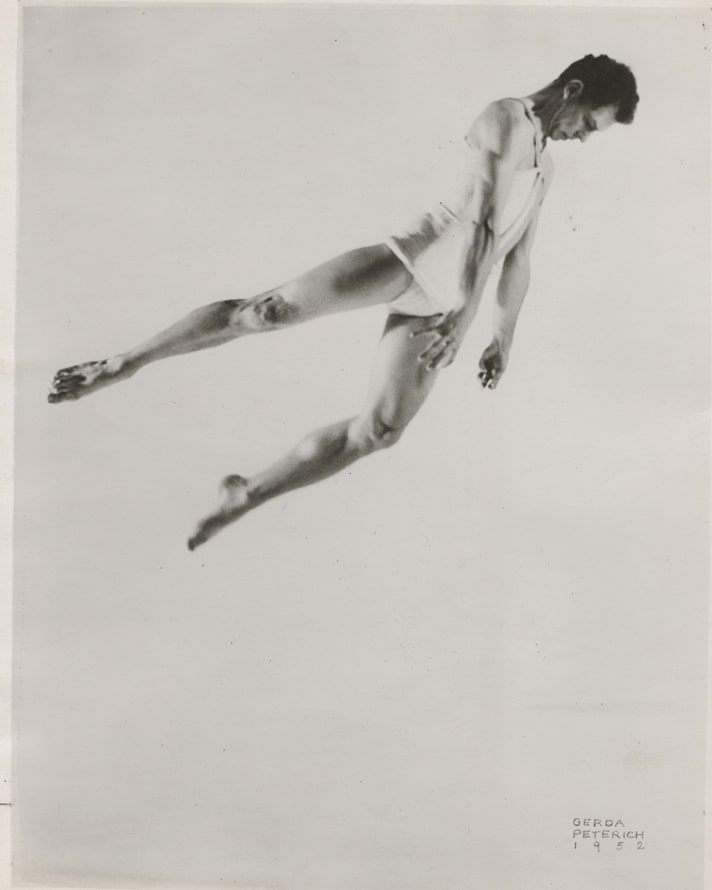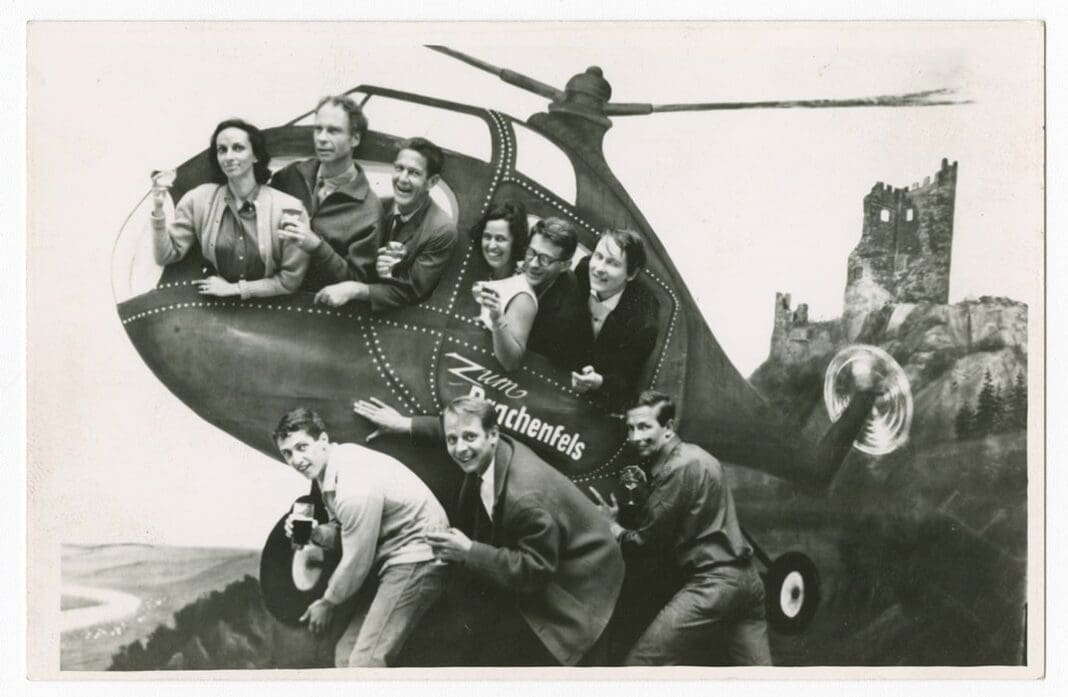With the exhibition “Five Friends. John Cage, Merce Cunningham, Jasper Johns, Robert Rauschenberg, Cy Twombly,” Museum Brandhorst is showing a circle of artists who had a decisive influence on music, dance and art in the post-war period. In an intensive exchange, Cage, Cunningham, Johns, Rauschenberg and Twombly created unique connections between the artistic genres and media. With over 180 works of art as well as scores, stage props, costumes, photographs and archival material, the exhibition provides an insight into the interaction between the five artist friends.
Image above: Carolyn Brown, Merce Cunningham, John Cage, Doris Stockhausen, David Tudor, Michael von Biel, Steve Paxton, Karlheinz Stockhausen, and Robert Rauschenberg during the Merce Cunningham Dance Company world tour, 1964 © Photograph Collection. Robert Rauschenberg Foundation Archives, New York. Foto: Unattributed.
“All of us worked totally committed, shared every intense emotion and I think performed miracles, for love only.” Robert Rauschenberg
They decisively shaped the art of the 20th century: the musician and theorist John Cage (1912–1992), the choreographer and dancer Merce Cunningham (1919–2009) and the painters and sculptors Jasper Johns (*1930), Robert Rauschenberg (1925–2008) and Cy Twombly (1928–2011). But this is not all that connects the five artists; they also shared unique friendships that were characterized by artistic collaborations, intensive debates, intimate love affairs and painful separations. Their similar interests formed the basis for this connection. All five artists were in search of new forms of expression and were concerned with similar themes: with silence and chance, with technology and progress, with tradition and radical innovation.

In the 1940s and 1950s, the five friends got to know each other in various constellations and formed a creative and intimate network in which theme, ideas and inspirations circulated. This is where the exhibition begins: At the legendary Black Mountain College, Cage and Cunningham developed their concept of stillness and chance in direct exchange with the younger artists Rauschenberg and Twombly; after an extended trip to Italy and North Africa, the latter couple developed their “signature style”: Rauschenberg his Combines—a mixture of paintings and sculptures into which he also integrated drawings and photographs—and Twombly his allusive strokes reminiscent of graffiti. Jasper Johns joined the circle of artists in 1954 and created his own pictorial concept with his flags and targets. In the course of their international breakthrough in the late 1950s and early 1960s, the five friends became pioneers of Happening, Fluxus, Pop Art and Minimal Art.

The collaborative spirit of the artists found its clearest expression in the dance performances of the Merce Cunningham Dance Company (MCDC). The central room on the lower level of Museum Brandhorst is therefore decorated entirely in black. While Cage was the musical director of the MCDC, Rauschenberg and Johns designed many of the costumes and stage sets. Highlights of these collaborations can be discovered in the exhibition.
The political context of the Cold War permeated the artists’ works. Rauschenberg cultivated an almost obsessive approach to American (power) symbols; Johns’ most famous works are appropriations of the American flag and targets that refer to US state policy and the military; and Twombly’s supposedly enraptured references to antiquity in the paintings of the 1960s often refer to specific political and historical events such as the assassination of John F. Kennedy or the Cuban Missile Crisis. Twombly and Rauschenberg in particular reacted to the evolution of space travel in their artistic work. Rauschenberg’s project “Stoned Moon” (1969-1970) was even commissioned by NASA. In 1968, Twombly created the painting “Orion III,” which alludes to a NASA rocket system that was to be powered by nuclear energy.

The Cold War between the USA and the USSR, which came to a head in the late 1940s, was also waged on an ideological level. The politician Joseph McCarthy unleashed a veritable witch-hunt on alleged communists and queer people. Rauschenberg’s romantic relationships with Twombly and Johns, as well as that between Cage and Cunningham, must also be seen against this historical background. Communication about queer desire was only possible through hidden hints and codes. The five friends repeatedly refer to this game of concealment and revelation in their works. Jasper Johns’ Targets can thus also be read as a commentary on the targeting of queer people.

Silence, emptiness and absence are at the heart of many of the five friends’ works. They invite us to focus our attention on sounds, objects and movements that are not immediately perceptible, not predictable and also not controllable: random events in the room, footsteps, a clearing of the throat, the light of the sun or the patterns of shadows on the wall, the structure of a primed canvas. The art created by the five friends encourages us to pause and be mindful. By no means do they withdraw into an ivory tower. Their concept of silence is not a place of retreat, but of openness. In view of current political developments such as the growing popularity of authoritarian forms of government and the sheer endless stream of images and news, the five friends’ art seems highly topical. It is a journey through time to the roots of contemporary issues: the fear of war, dealing with social repression and the confrontation with mass media and technological revolutions.
The exhibition spans three decades—a period in which the interweaving of art, friendship, competition and affection became a decisive impulse in the work of the five artists. Many of the works—especially in the 1950s—were created side by side and in direct interaction. In this exhibition, they can be experienced for the first time in their original production context: iconic key works as well as works that have rarely or never been shown before.

The extensive exhibition has only been possible thanks to the close cooperation between Museum Brandhorst and Museum Ludwig: while Museum Brandhorst houses the most extensive European collection of works by Cy Twombly, no other museum in Europe has as many major works by Jasper Johns and Robert Rauschenberg as the Ludwig Museum in Cologne.
Curated by
Achim Hochdörfer, Yilmaz Dziewior mit Arthur Fink and Anna Huber
WHEN?
Wednesday, 9. April until Sunday, 17. August 2025
Opening hours:
Every day except Monday: 10 am – 6 pm
Thursday: 10 am – 8 pm
WHERE?
Museum Brandhorst
Theresienstraße 35a
80333 Munich
COSTS?
Regular: 9 EUR
Reduced: 7 EUR
Sundays: 3 EUR






